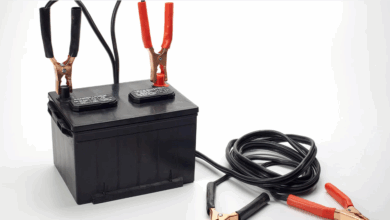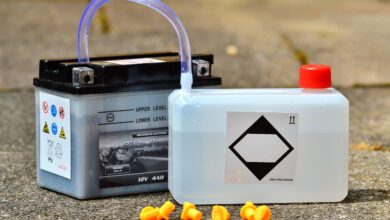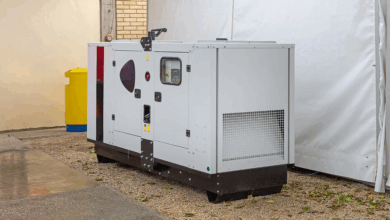Blackout Blues? A Small Generator is Your Answer

Blackout Blues? A Small Generator is Your Simple Solution
The lights flicker, dimming the room. Then, silence. The hum of the refrigerator stops. The air conditioning cuts out. Your phone, which you were just charging, sits lifeless. You check the street – dark. Another power outage.
For many of us, the modern world relies entirely on a constant flow of electricity. When that flow is interrupted, even for a few hours, it can throw life into disarray. This isn’t just an inconvenience; it’s the "Blackout Blues." It’s the anxiety of food spoilage, the discomfort of no heating or cooling, the frustration of losing communication, and the simple unease of being left literally in the dark.
While large-scale power outages due to severe weather, grid strain, or unexpected failures seem to be happening with increasing frequency, waiting for the utility company to restore power can feel like a helpless situation. But it doesn’t have to be. You can take control of your immediate environment and significantly mitigate the effects of the Blackout Blues. The answer for many homeowners and renters isn’t a complex, expensive whole-house system, but a far more accessible and portable solution: a small generator.
Understanding the Blackout Blues
Let’s break down exactly what makes power outages so frustrating:
- Loss of Essentials: Refrigeration is arguably the most critical. Without power, perishable food starts to spoil rapidly, leading to wasted money and potential health risks. Heating and cooling systems cease, making homes uncomfortable or even unsafe in extreme temperatures.
- Loss of Communication and Information: In an emergency, phone chargers, internet routers, and radios are vital. Losing access to news, weather updates, and the ability to contact loved ones adds to the anxiety.
- Safety and Security Concerns: Darkness itself can feel unsettling. Lights are essential for navigating your home safely and can also deter potential intruders. Security systems relying on power are rendered useless.
- Daily Life Disruption: Simple tasks become difficult. Cooking (if electric), doing laundry, working or studying from home, and even basic entertainment are interrupted.
- Financial Impact: Beyond food spoilage, extended outages can mean lost work hours, potential damage to sensitive electronics from power surges upon restoration, and the cost of dining out if you can’t cook at home.
These combined factors create a sense of vulnerability and frustration – the very essence of the Blackout Blues.
Enter the Small Generator: Your Beacon in the Dark
A small generator, often referred to as a portable generator, is not designed to power your entire house, nor should it be used that way. Its strength lies in its ability to provide power to the essential items you need to get by comfortably and safely during an outage.
Think of it as targeted relief. Instead of trying to power everything, you prioritize. This focus makes small generators significantly more affordable, easier to store, simpler to operate, and relatively portable compared to their whole-house counterparts.
What Can a Small Generator Realistically Power?
This is where understanding the purpose of a small generator is key. It’s about keeping core functions alive:
- Refrigeration: A primary concern. A small generator can easily power your refrigerator and perhaps a freezer, saving hundreds of dollars in spoiled food.
- Lighting: A few lamps can make a huge difference in navigating your home safely and comfortably.
- Communication: Keeping phones, laptops, and internet routers charged is vital for staying connected and informed.
- Basic Comfort: Running a fan in the summer or a small electric heater (with caution and sufficient wattage) in the winter can make a significant difference.
- Medical Devices: For those reliant on medical equipment requiring power, a generator can be a lifesaver.
- Small Appliances: Brewing coffee, running a microwave for a quick meal, or using a toaster might be possible depending on the generator’s capacity and what else is running.
The key is managing the load. You typically can’t run all these things simultaneously on a small generator. You might need to cycle between powering the refrigerator, charging devices, and running a light.
Choosing the Right Small Generator
Selecting the right generator involves considering a few factors:
- Wattage: Generators are rated by wattage – both starting (peak) watts and running (continuous) watts. Starting watts are needed for a brief moment when a motor kicks on (like a refrigerator compressor). Running watts are what the device uses continuously. You need to estimate your essential needs by listing the items you want to power and finding their wattage requirements (usually on a label or in the manual). Sum the running watts of everything you might want to run simultaneously and add the highest starting wattage of any single appliance you’ll be using. This gives you a rough idea of the generator size needed. For most essential home needs, a generator in the 1500-4000 running watt range is often sufficient.
- Type: Conventional vs. Inverter:
- Conventional Generators: These are typically louder and produce power with less "clean" sine wave, which can sometimes be problematic for sensitive electronics. They are often less expensive for their wattage.
- Inverter Generators: These use advanced technology to produce cleaner power (safer for laptops, phones, etc.) and are significantly quieter. They are also often more fuel-efficient and have variable engine speeds depending on the load. For most homeowners prioritizing quiet operation and safely powering electronics, an inverter generator is often the preferred choice, though they tend to cost more initially.
- Fuel Type: Most small portable generators run on gasoline. Consider fuel storage safety and the availability of gasoline during an extended outage. Some smaller models use propane, which has a longer shelf life than gasoline.
- Features: Look for features like multiple outlets (including GFCI outlets for safety), low-oil shut-off (protects the engine), fuel gauge, portability (wheels and handles), and electric start (easier than pull-start).
Safety First: Critical Operating Rules
Owning a generator comes with significant responsibilities, especially regarding safety. Carbon monoxide poisoning is a silent, deadly threat.
- NEVER operate a generator indoors, in a garage, basement, crawlspace, or any partially enclosed area. Generators must be operated outdoors in a well-ventil ventilated area, far away from windows, doors, and vents leading into your home or neighboring homes. Follow the manufacturer’s recommended safe distance (usually 15-20 feet away).
- Install carbon monoxide detectors in your home, especially near sleeping areas.
- Use heavy-duty, outdoor-rated extension cords that are properly sized for the electrical load. Running cords indoors requires careful planning to avoid creating tripping hazards or pinching the cords.
- Never plug the generator directly into your home’s electrical outlet (backfeeding). This can create a deadly situation for utility workers and others. If you need to power circuits directly (which is beyond the scope of a small generator’s typical use and requires professional installation), you need a transfer switch. For small generators powering essentials, you run extension cords directly from the generator to the appliances.
- Store fuel safely in approved containers, away from living areas, ignition sources, and the generator itself. Let the generator cool completely before refueling.
- Read the generator’s manual thoroughly before operation and follow all maintenance recommendations.
Preparation and Maintenance: Don’t Wait for the Dark
A generator is useless if it’s not ready when you need it.
- Purchase and test your generator before an outage. Familiarize yourself with starting procedures.
- Store an adequate supply of fresh fuel. Gasoline degrades over time; use a fuel stabilizer or rotate your stock regularly.
- Know where you will place the generator before the power goes out, ensuring it’s a safe distance from your home.
- Have appropriate extension cords ready and clearly labeled for which appliances they will power.
- Perform regular maintenance as recommended by the manufacturer (oil changes, air filter checks, etc.).
FAQs about Small Generators for Blackouts
Q: How much power do I really need?
A: It depends on your essential needs. Start by listing the critical items (fridge, lights, phone chargers, maybe a fan/small heater). Look at their wattage requirements (running and starting watts). Add up the running watts for things you’ll use simultaneously, and add the single highest starting wattage. This sum is your minimum required wattage. A 2000-3500 running watt inverter generator is often sufficient for core essentials in a typical home.
Q: What’s the difference between an inverter and a conventional generator? Which is better?
A: Inverter generators are generally quieter, more fuel-efficient, and produce "cleaner" power that’s safer for sensitive electronics like laptops and phones. Conventional generators are often louder, less efficient, but may be less expensive for the same wattage. For most homeowners needing to power electronics and wanting quieter operation, an inverter is often better if the budget allows.
Q: Can I run my entire house with a small generator?
A: No. Small portable generators are designed for powering essential appliances via extension cords, not for powering your home’s entire electrical system. Attempting to do so is unsafe and will likely overload the generator.
Q: How long will a small generator run on a tank of fuel?
A: This varies greatly depending on the generator’s fuel tank size and the load (how many watts you’re drawing). Running at half-load is more fuel-efficient than running at full capacity. Check the manufacturer’s specifications; run times can range from 3-4 hours at full load to 8-10+ hours at quarter or half load.
Q: Are small generators very noisy?
A: Conventional generators can be quite loud (comparable to a lawnmower). Inverter generators are significantly quieter, often ranging from 50-60 decibels at a distance, which is more like a normal conversation or air conditioner.
Q: Where should I store my generator?
A: Store it in a safe, dry location away from living areas and potential ignition sources, such as a shed or detached garage. Ensure it is cool and drained of fuel if storing for extended periods, or use a fuel stabilizer.
Q: Where should I operate my generator during a blackout?
A: OUTSIDE ONLY. Place it on a flat, stable surface far away from windows, doors, and vents to prevent carbon monoxide from entering your home. Follow the manufacturer’s recommended distance (typically 15-20 feet).
Conclusion
Experiencing a power outage is never pleasant, but it doesn’t have to plunge you into complete helplessness and the depths of the Blackout Blues. A small, portable generator offers a practical, manageable, and relatively affordable solution to keep your essential lights on, your food cold, your devices charged, and your family safer and more comfortable until utility power is restored.
While owning and operating a generator requires understanding and adhering to crucial safety protocols, the peace of mind it provides knowing you have a reliable backup plan for life’s necessities is invaluable. Don’t wait for the next storm or grid failure. Invest in a small generator, learn how to use it safely, prepare your fuel and cords, and be ready to generate your own light and power through the darkness. It’s your simple answer to beating the Blackout Blues.




![How to Bypass CO Sensor on Generator – [4-Step Safety Guide]](https://www.generator411.com/wp-content/uploads/2025/08/co-sensor-on-generator-390x220.png)